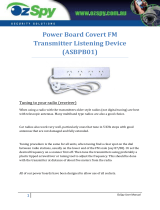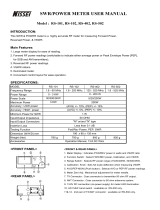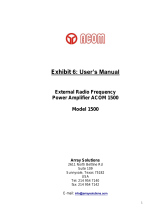MFJ 9417X is a 17-meter SSB transceiver that is perfect for portable or mobile operation. It features a rugged construction, a built-in speaker, and a microphone input. The transceiver is easy to operate, with a single knob for tuning and a few buttons for other functions. It also has a built-in SWR meter, so you can make sure that your antenna is properly tuned. The MFJ 9417X is a great choice for anyone looking for a compact and portable SSB transceiver.
MFJ 9417X is a 17-meter SSB transceiver that is perfect for portable or mobile operation. It features a rugged construction, a built-in speaker, and a microphone input. The transceiver is easy to operate, with a single knob for tuning and a few buttons for other functions. It also has a built-in SWR meter, so you can make sure that your antenna is properly tuned. The MFJ 9417X is a great choice for anyone looking for a compact and portable SSB transceiver.
















-
 1
1
-
 2
2
-
 3
3
-
 4
4
-
 5
5
-
 6
6
-
 7
7
-
 8
8
-
 9
9
-
 10
10
-
 11
11
-
 12
12
-
 13
13
-
 14
14
-
 15
15
-
 16
16
MFJ 9417X is a 17-meter SSB transceiver that is perfect for portable or mobile operation. It features a rugged construction, a built-in speaker, and a microphone input. The transceiver is easy to operate, with a single knob for tuning and a few buttons for other functions. It also has a built-in SWR meter, so you can make sure that your antenna is properly tuned. The MFJ 9417X is a great choice for anyone looking for a compact and portable SSB transceiver.
Ask a question and I''ll find the answer in the document
Finding information in a document is now easier with AI
Related papers
Other documents
-
 OzSpy ASBPB01 User manual
OzSpy ASBPB01 User manual
-
Mirage PAC10-70-B Owner's manual
-
Mirage B-1018-R, VHF R.AMP,3-4W IN-120W OUT,145-148 MHZ Owner's manual
-
Mirage B-2518-R User manual
-
 Nissei RS-101, 102, 402, 502 User manual
Nissei RS-101, 102, 402, 502 User manual
-
 Acom 1500 User manual
Acom 1500 User manual
-
Mirage B-1018-G User manual
-
Mirage B-2518-G User manual
-
RM HLA 150 plus Quick start guide
-
Mirage B-1018-G User manual



























